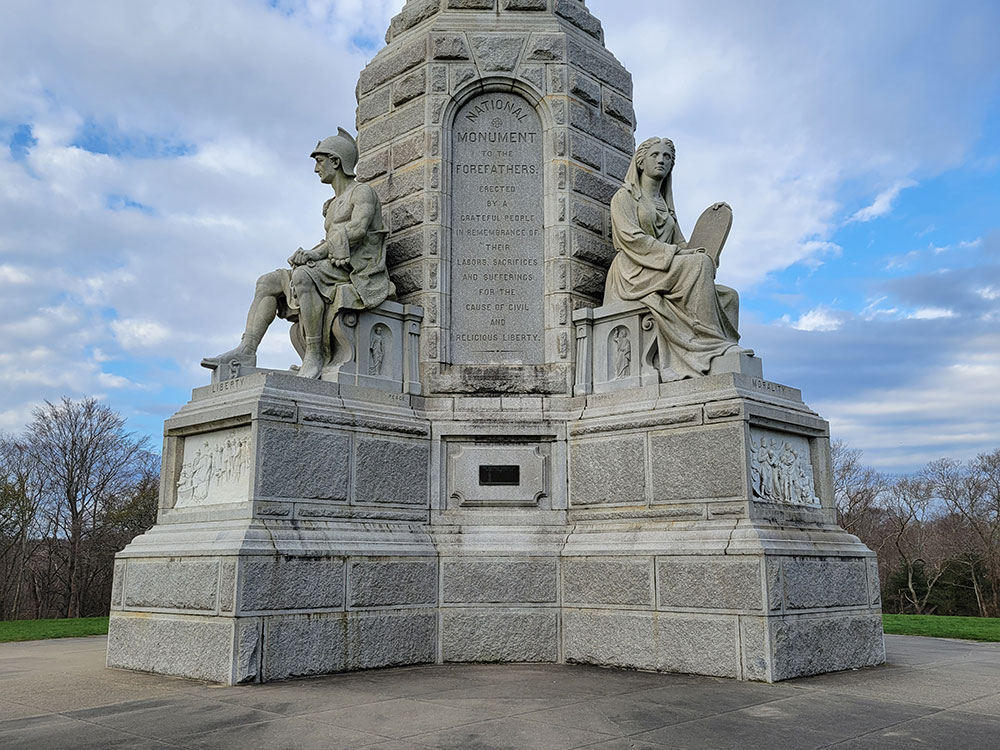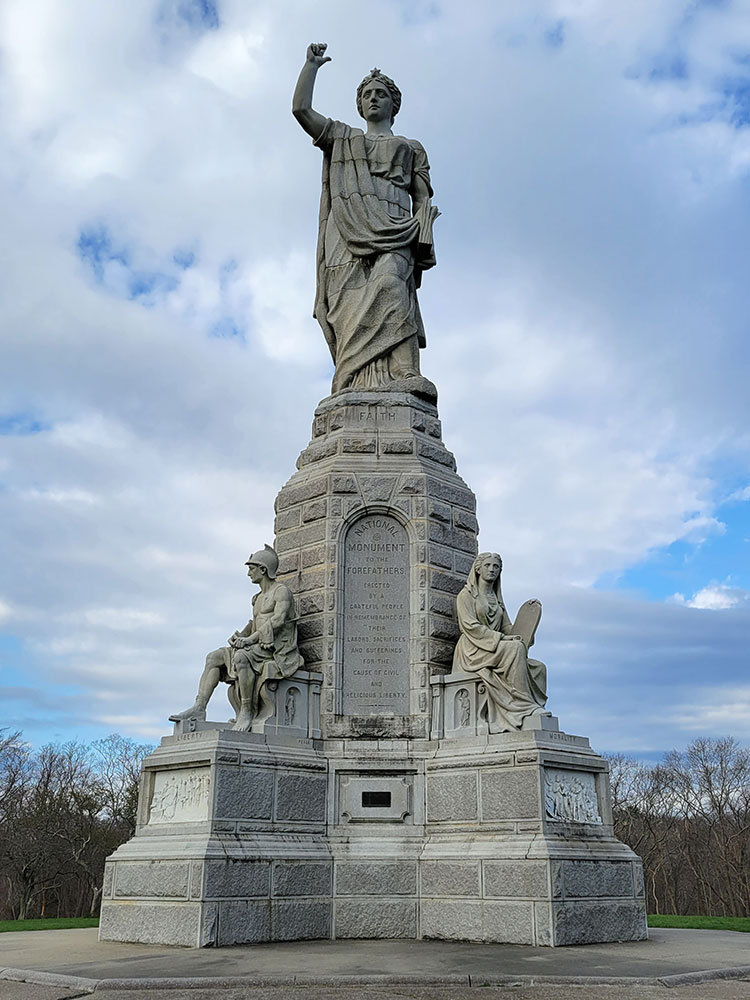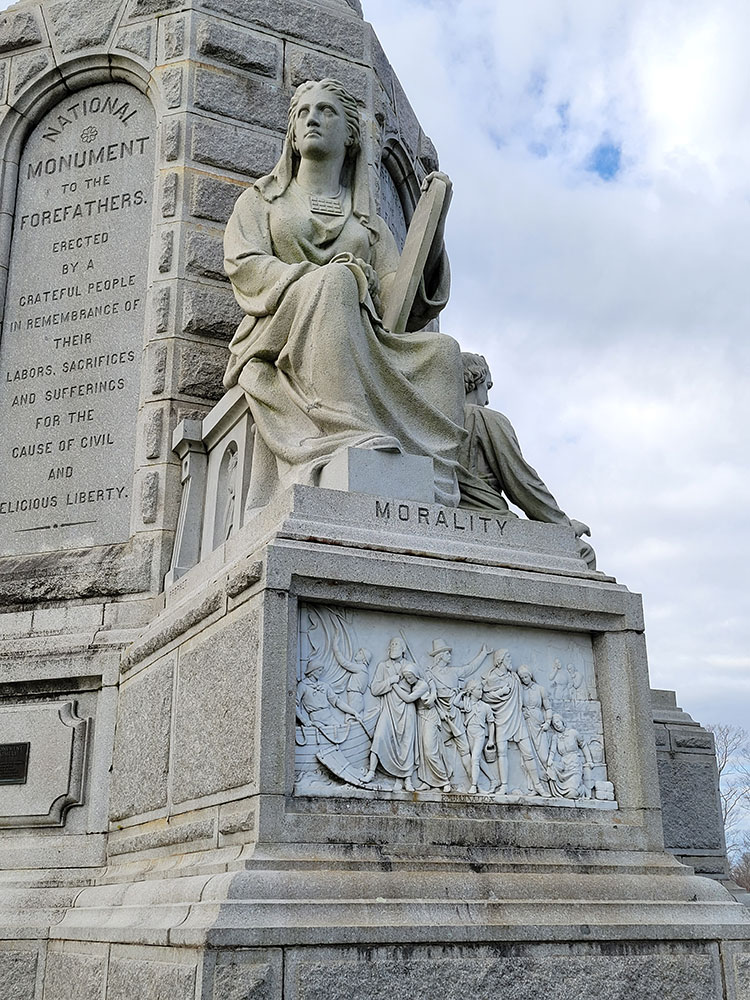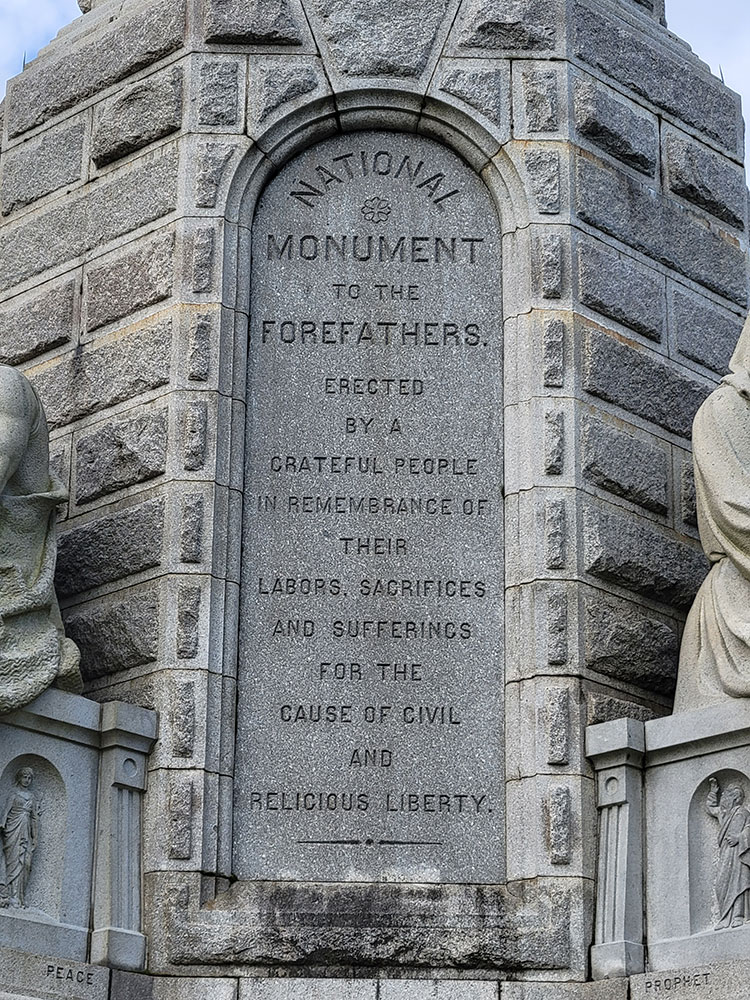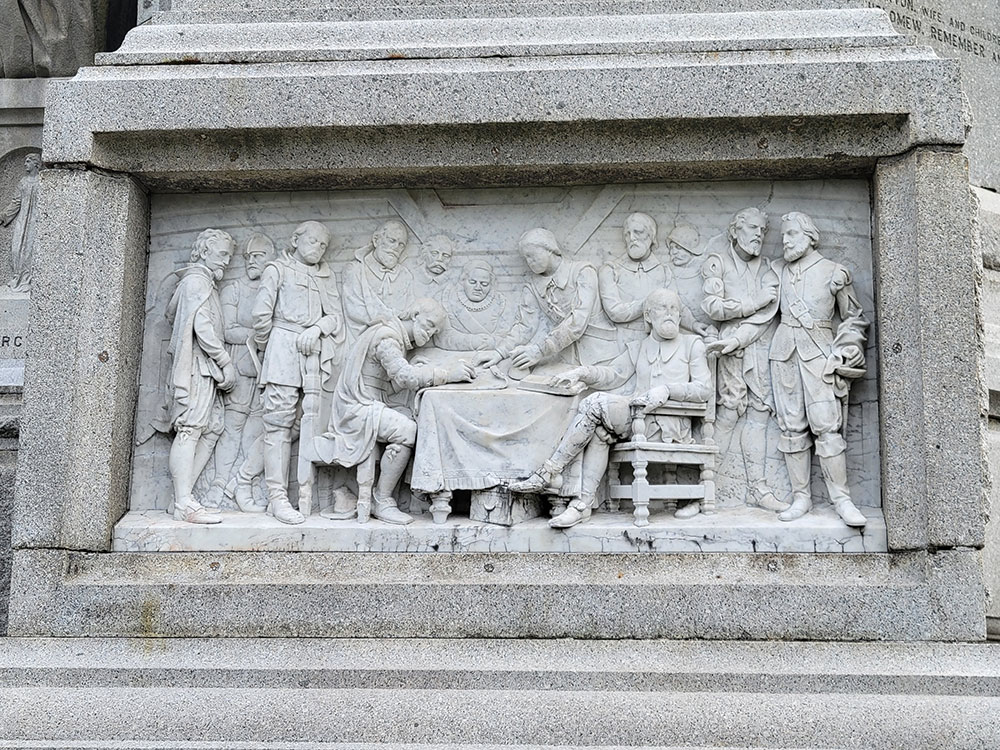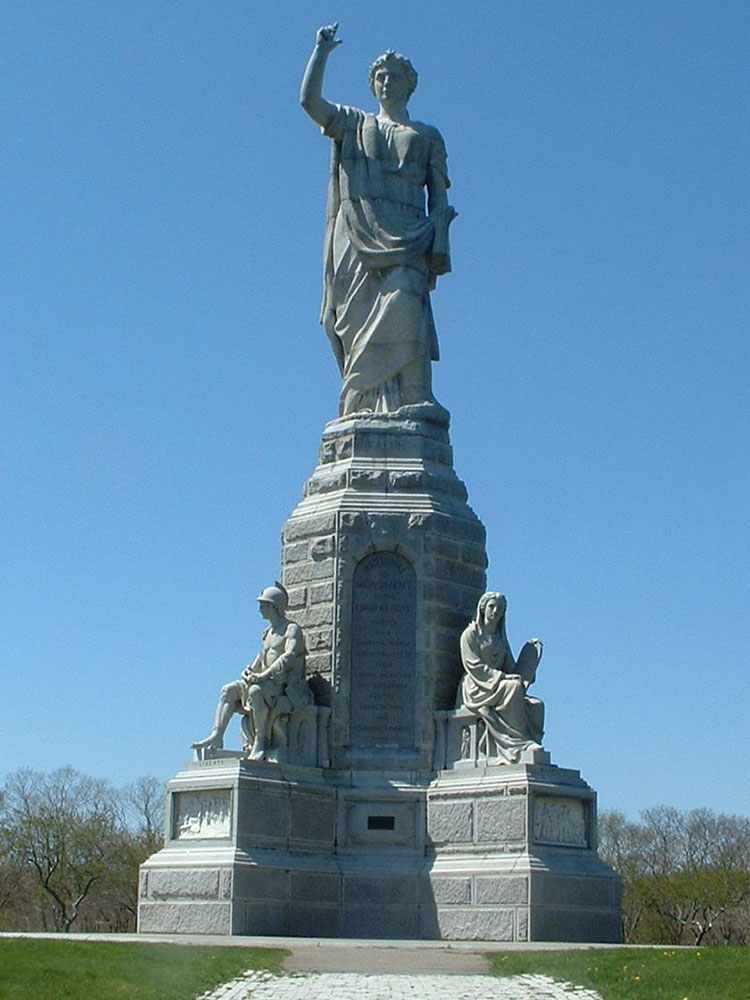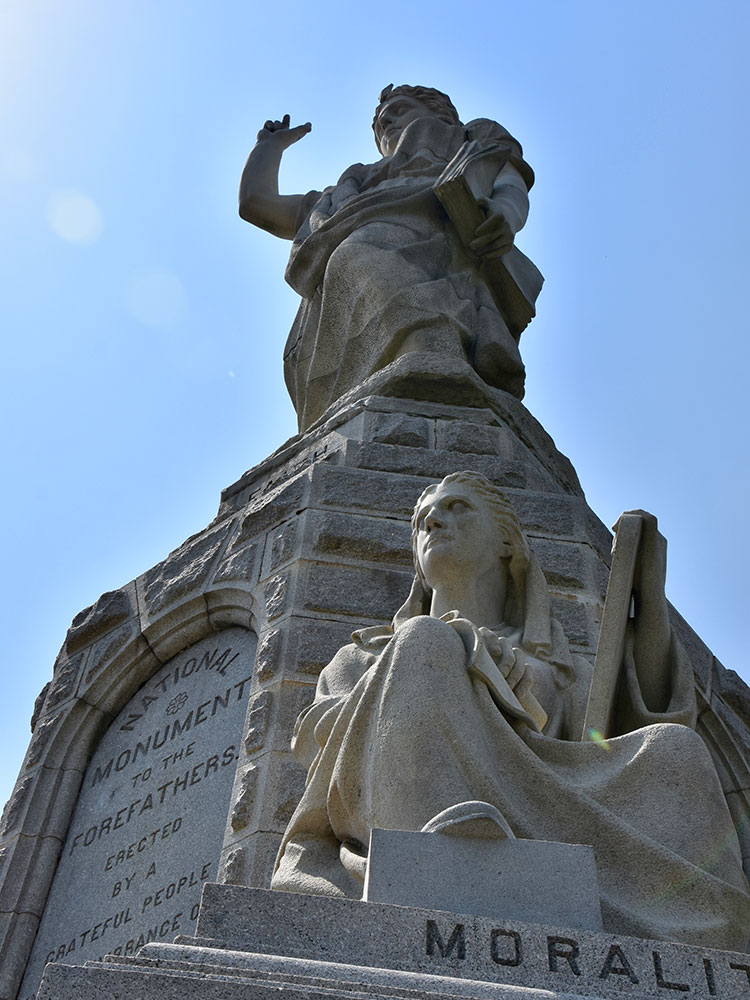81-foot-tall (25 m) monument commemorating the Mayflower Pilgrims
General Information
How to Get There
Overview
The National Monument to the Forefathers, formerly known as the Pilgrim Monument, commemorates the Mayflower Pilgrims.
Located in Plymouth, Massachusetts, the 81-foot-tall (25 m) monument was commissioned by the Pilgrim Society. The original concept dates to around 1820, with actual planning beginning in 1850. The cornerstone was laid August 2, 1859 by the Grand Lodge of Masons in Massachusetts, under the direction of Grand Master John T. Heard. The monument was completed in October 1888, and was dedicated with appropriate ceremonies on August 1, 1889.
Hammatt Billings, Boston architect, illustrator and sculptor, originally conceived the monument as a 150-foot-tall (46 m) structure comparable to the Colossus of Rhodes. Shortly before his death in 1874, Billings reduced the size of the monument, which was to be made entirely of granite quarried in Hallowell, Maine. The project was then passed to Billings' brother Joseph who, along with other sculptors including Alexander Doyle, Carl Conrads, and James Mahoney, reworked the design, although the basic components remained. The monument, which faces northeast to Plymouth Harbor (and, roughly, towards Plymouth, England), sits in the center of a circular drive, which is accessed from Allerton Street from the east. The plan of the principal pedestal is octagonal, with four small, and four large faces; from the small faces project four buttresses. On the main pedestal stands the heroic figure of "Faith" with her right hand pointing toward heaven and her left hand clutching the Bible. Upon the four buttresses also are seated figures emblematic of the principles upon which the Pilgrims founded their Commonwealth; counter-clockwise from the east are Morality, Law, Education, and Liberty. Each was carved from a solid block of granite, posed in the sitting position upon chairs with a high relief on either side of minor characteristics. Under "Morality" stand "Prophet" and "Evangelist"; under "Law" stand "Justice" and "Mercy"; under "Education" are "Youth" and "Wisdom"; and under "Liberty" stand "Tyranny Overthrown" and "Peace". On the face of the buttresses, beneath these figures are high reliefs in marble, representing scenes from Pilgrim history. Under "Morality" is "Embarcation"; under "Law" is "Treaty"; under "Education" is "Compact"; and under "Freedom" is "Landing". Upon the four faces of the main pedestal are large panels for records. The front panel is inscribed as follows: "National Monument to the Forefathers. Erected by a grateful people in remembrance of their labors, sacrifices and sufferings for the cause of civil and religious liberty." The right and left panels contain the names of those who came over in the Mayflower.
The monument was listed on the National Register of Historic Places on August 30, 1974. Originally under the care of the Pilgrim Society, it was given to the Massachusetts government in 2001. It and Plymouth Rock constitute the Pilgrim Memorial State Park.
This article uses material from the Wikipedia article "National Monument to the Forefathers", which is released under the Creative Commons Attribution-Share-Alike License 3.0
